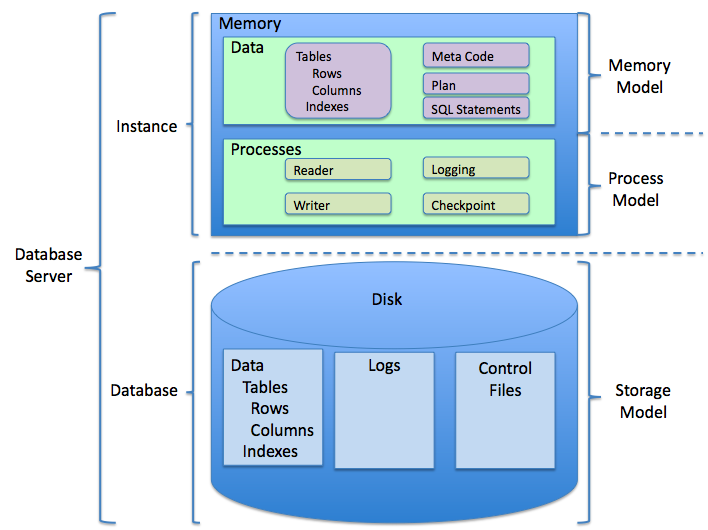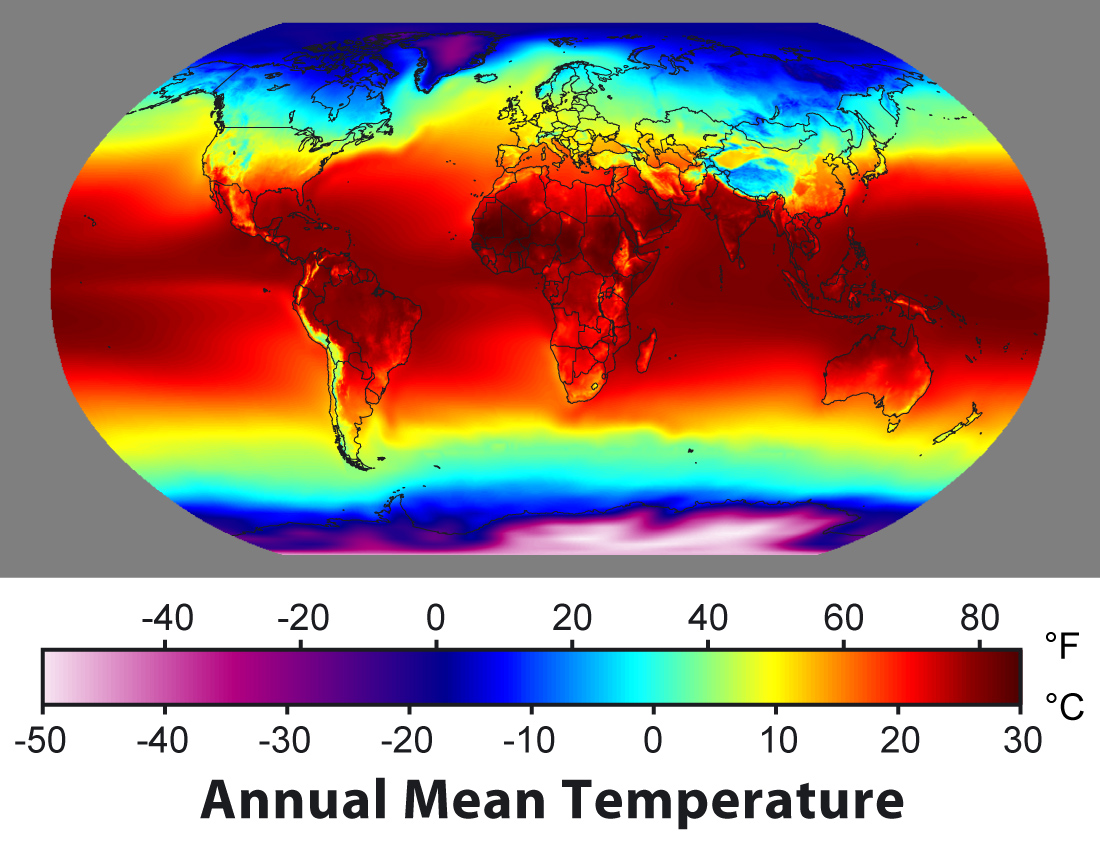|
EdGCM
The Educational Global Climate Model or EdGCM is a fully functional global climate model (GCM) that was ported for use on desktop computers (Windows PCs and Macs) for use in education. It operates through a graphical user interface and is integrated with a relational database and scientific visualization utilities, all of which aim at helping improve the quality of teaching and understanding of climatology by making real-world research experiences more accessible. EdGCM was designed to permit teachers and students to conduct in-depth investigations of past, present and future climate scenarios in a manner that is essentially identical to the techniques used by national and international climate research organizations. EdGCM was developed at the Goddard Institute for Space Studies as a joint project of Columbia University and NASA scientists and programmers. The Global Climate Model at the core of EdGCM is 'GISS Model II''. During the 1980s and early 1990s, this GCM was one of NASA ... [...More Info...] [...Related Items...] OR: [Wikipedia] [Google] [Baidu] |
Global Climate Model
A general circulation model (GCM) is a type of climate model. It employs a mathematical model of the general circulation of a planetary atmosphere or ocean. It uses the Navier–Stokes equations on a rotating sphere with thermodynamics, thermodynamic terms for various energy sources (radiation, latent heat). These equations are the basis for computer programs used to simulation, simulate the Earth's atmosphere or oceans. Atmospheric and oceanic GCMs (AGCM and Ocean general circulation model, OGCM) are key components along with sea ice and Land, land-surface components. GCMs and global climate models are used for weather forecasting, understanding the climate, and forecasting climate change. Atmospheric GCMs (AGCMs) model the atmosphere and impose sea surface temperatures as boundary conditions. Coupled atmosphere-ocean GCMs (AOGCMs, e.g. HadCM3, EdGCM, GFDL CM2.X, ARPEGE-Climat) combine the two models. The first general circulation climate model that combined both oceanic and a ... [...More Info...] [...Related Items...] OR: [Wikipedia] [Google] [Baidu] |
Goddard Institute For Space Studies
The Goddard Institute for Space Studies (GISS) is a laboratory in the Earth Sciences Division of NASA's Goddard Space Flight Center affiliated with the Columbia University Earth Institute. The institute is located at Columbia University in New York City. It was named after Robert H. Goddard, American engineer, professor, physicist and inventor who is credited with creating and building the world's first liquid-fueled rocket. Research at the GISS emphasizes a broad study of global change, the natural and anthropogenic changes in our environment that affect the habitability of our planet. These effects may occur on greatly differing time scales, from one-time forcings such as volcanic explosions, to seasonal/annual effects such as El Niño, and on up to the millennia of ice ages. The institute's research combines analysis of comprehensive global datasets (derived from surface stations combined with satellite data for sea surface temperatures) with global models of atmospheri ... [...More Info...] [...Related Items...] OR: [Wikipedia] [Google] [Baidu] |
HadCM3
HadCM3 (abbreviation for ''Hadley Centre Coupled Model, version 3'') is a coupled atmosphere-ocean general circulation model (AOGCM) developed at the Hadley Centre in the United Kingdom. It was one of the major models used in the IPCC Third Assessment Report in 2001. Unlike earlier AOGCMs at the Hadley Centre and elsewhere (including its predecessor HadCM2), HadCM3 does not need flux adjustment (additional "artificial" heat and freshwater fluxes at the ocean surface) to produce a good simulation. The higher ocean resolution of HadCM3 is a major factor in this; other factors include a good match between the atmospheric and oceanic components; and an improved ocean mixing scheme (Gent and McWilliams). HadCM3 has been run to produce simulations for periods of over a thousand years, showing little drift in its surface climate. HadCM3 is composed of two components: the atmospheric model HadAM3 and the ocean model HadOM3 (which includes a sea ice model). Simulations use a 360-day cal ... [...More Info...] [...Related Items...] OR: [Wikipedia] [Google] [Baidu] |
Graphical User Interface
A graphical user interface, or GUI, is a form of user interface that allows user (computing), users to human–computer interaction, interact with electronic devices through Graphics, graphical icon (computing), icons and visual indicators such as secondary notation. In many applications, GUIs are used instead of text-based user interface, text-based UIs, which are based on typed command labels or text navigation. GUIs were introduced in reaction to the perceived steep learning curve of command-line interfaces (CLIs), which require commands to be typed on a computer keyboard. The actions in a GUI are usually performed through direct manipulation interface, direct manipulation of the graphical elements. Beyond computers, GUIs are used in many handheld mobile devices such as MP3 players, portable media players, gaming devices, smartphones and smaller household, office and Distributed control system, industrial controls. The term ''GUI'' tends not to be applied to other lower-displa ... [...More Info...] [...Related Items...] OR: [Wikipedia] [Google] [Baidu] |
Relational Database
A relational database (RDB) is a database based on the relational model of data, as proposed by E. F. Codd in 1970. A Relational Database Management System (RDBMS) is a type of database management system that stores data in a structured format using rows and columns. Many relational database systems are equipped with the option of using SQL (Structured Query Language) for querying and updating the database. History The concept of relational database was defined by E. F. Codd at IBM in 1970. Codd introduced the term ''relational'' in his research paper "A Relational Model of Data for Large Shared Data Banks". In this paper and later papers, he defined what he meant by ''relation''. One well-known definition of what constitutes a relational database system is composed of Codd's 12 rules. However, no commercial implementations of the relational model conform to all of Codd's rules, so the term has gradually come to describe a broader class of database systems, which at a ... [...More Info...] [...Related Items...] OR: [Wikipedia] [Google] [Baidu] |
Climatology
Climatology (from Greek , ''klima'', "slope"; and , '' -logia'') or climate science is the scientific study of Earth's climate, typically defined as weather conditions averaged over a period of at least 30 years. Climate concerns the atmospheric condition during an extended to indefinite period of time; weather is the condition of the atmosphere during a relative brief period of time. The main topics of research are the study of climate variability, mechanisms of climate changes and modern climate change. This topic of study is regarded as part of the atmospheric sciences and a subdivision of physical geography, which is one of the Earth sciences. Climatology includes some aspects of oceanography and biogeochemistry. The main methods employed by climatologists are the analysis of observations and modelling of the physical processes that determine climate. Short term weather forecasting can be interpreted in terms of knowledge of longer-term phenomena of climate, for insta ... [...More Info...] [...Related Items...] OR: [Wikipedia] [Google] [Baidu] |
NASA
The National Aeronautics and Space Administration (NASA ) is an independent agencies of the United States government, independent agency of the federal government of the United States, US federal government responsible for the United States's civil list of government space agencies, space program, aeronautics research and outer space, space research. National Aeronautics and Space Act, Established in 1958, it succeeded the National Advisory Committee for Aeronautics (NACA) to give the American space development effort a distinct civilian orientation, emphasizing peaceful applications in space science. It has since led most of America's space exploration programs, including Project Mercury, Project Gemini, the 1968–1972 Apollo program missions, the Skylab space station, and the Space Shuttle. Currently, NASA supports the International Space Station (ISS) along with the Commercial Crew Program and oversees the development of the Orion (spacecraft), Orion spacecraft and the Sp ... [...More Info...] [...Related Items...] OR: [Wikipedia] [Google] [Baidu] |
NCAR
The US National Center for Atmospheric Research (NCAR ) is a US federally funded research and development center (FFRDC) managed by the nonprofit University Corporation for Atmospheric Research (UCAR) and funded by the National Science Foundation (NSF). NCAR has multiple facilities, including the I. M. Pei-designed Mesa Laboratory headquarters in Boulder, Colorado. Studies include meteorology, climate science, atmospheric chemistry, solar-terrestrial interactions, environmental and societal impacts. Tools and technologies NCAR was instrumental in developing lidar, light radar, now a key archaeological tool, as well as providing a broad array of tools and technologies to the scientific community for studying Earth's atmosphere, including, * Specialized instruments to measure atmospheric processes * Research aircraft * High-performance computing and cyberinfrastructure, including supercomputers * Mauna Loa Solar Observatory * Cooperative field campaigns * Atmospheric models ... [...More Info...] [...Related Items...] OR: [Wikipedia] [Google] [Baidu] |
Community Climate System Model
The Community Climate System Model (CCSM) is a coupled general circulation model (GCM) developed by the University Corporation for Atmospheric Research (UCAR) with funding from the National Science Foundation (NSF), the Department of Energy (DoE), and the National Aeronautics and Space Administration (NASA). The coupled components include an atmospheric model (Community Atmosphere Model), a land-surface model (Community Land Model), an ocean model ( Parallel Ocean Program), and a sea ice model (Community Sea Ice Model, CICE). CCSM is maintained by the National Center for Atmospheric Research (NCAR). Its software design assumes a physical/dynamical component of the climate system and, as a freely available community model, is designed to work on a variety of machine architectures powerful enough to run the model. The CESM codebase is mostly public domain with some segregable components issued under open source and other licenses. The offline chemical transport model has been ... [...More Info...] [...Related Items...] OR: [Wikipedia] [Google] [Baidu] |
NOAA
The National Oceanic and Atmospheric Administration (NOAA ) is an American scientific and regulatory agency charged with forecasting weather, monitoring oceanic and atmospheric conditions, charting the seas, conducting deep-sea exploration, and managing fishing and protection of marine mammals and endangered species in the US exclusive economic zone. The agency is part of the United States Department of Commerce and is headquartered in Silver Spring, Maryland. History NOAA traces its history back to multiple agencies, some of which are among the earliest in the federal government: * United States Coast and Geodetic Survey, formed in 1807 * Weather Bureau of the United States, formed in 1870 * Bureau of Commercial Fisheries, formed in 1871 (research fleet only) * Coast and Geodetic Survey Corps, formed in 1917 The most direct predecessor of NOAA was the Environmental Science Services Administration (ESSA), into which several existing scientific agencies such as the ... [...More Info...] [...Related Items...] OR: [Wikipedia] [Google] [Baidu] |
GFDL CM2
The GNU Free Documentation License (GNU FDL or GFDL) is a copyleft license for free documentation, designed by the Free Software Foundation (FSF) for the GNU Project. It is similar to the GNU General Public License, giving readers the rights to copy, redistribute, and modify (except for "invariant sections") a work and requires all copies and derivatives to be available under the same license. Copies may also be sold commercially, but, if produced in larger quantities (greater than 100), the original document or source code must be made available to the work's recipient. The GFDL was designed for manuals, textbooks, other reference and instructional materials, and documentation which often accompanies GNU software. However, it can be used for any text-based work, regardless of subject matter. For example, the free online encyclopedia Wikipedia uses the GFDL (coupled with the Creative Commons Attribution Share-Alike License) for much of its text, excluding text that was impor ... [...More Info...] [...Related Items...] OR: [Wikipedia] [Google] [Baidu] |






